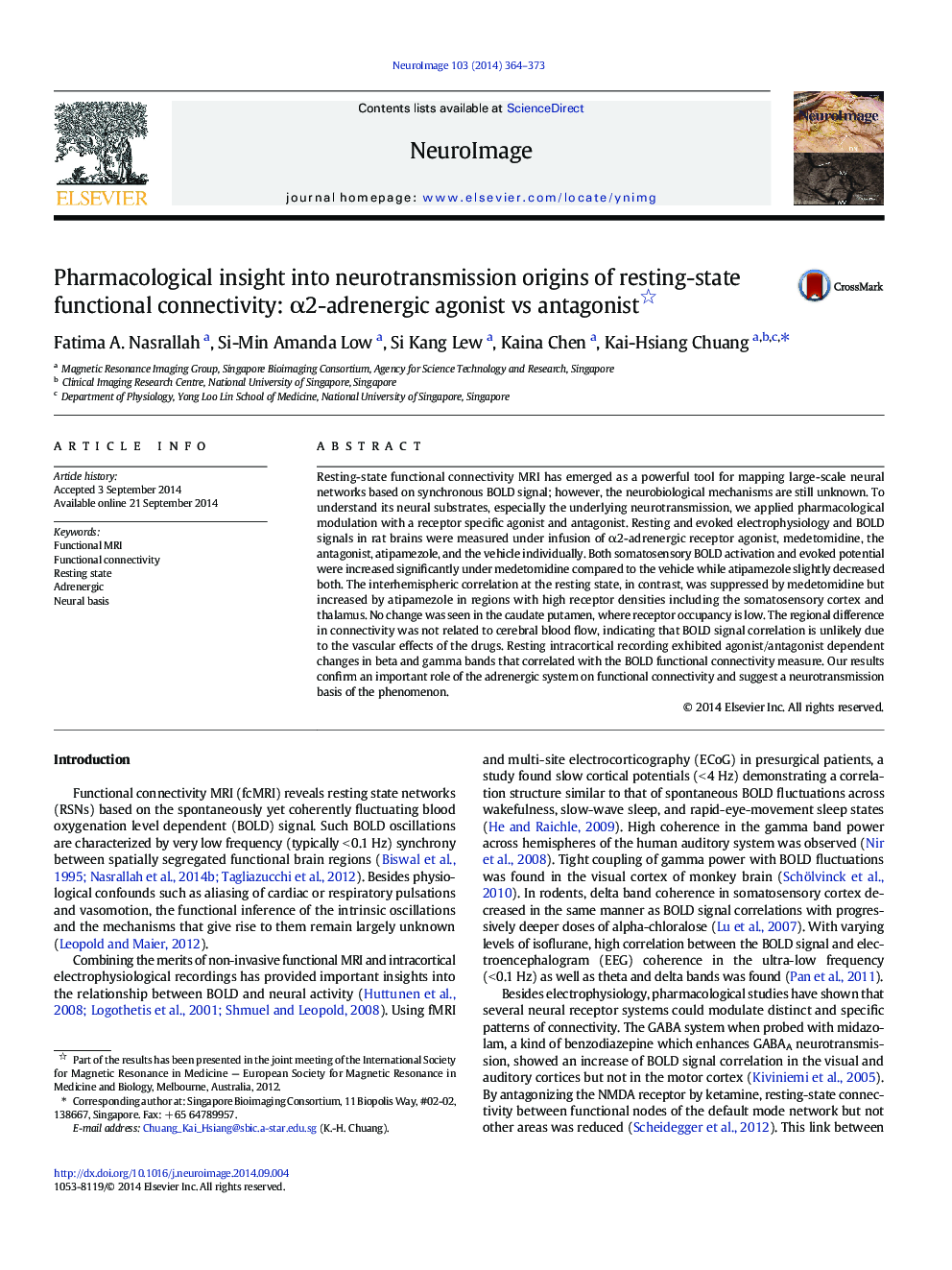| Article ID | Journal | Published Year | Pages | File Type |
|---|---|---|---|---|
| 6025774 | NeuroImage | 2014 | 10 Pages |
Abstract
Resting-state functional connectivity MRI has emerged as a powerful tool for mapping large-scale neural networks based on synchronous BOLD signal; however, the neurobiological mechanisms are still unknown. To understand its neural substrates, especially the underlying neurotransmission, we applied pharmacological modulation with a receptor specific agonist and antagonist. Resting and evoked electrophysiology and BOLD signals in rat brains were measured under infusion of α2-adrenergic receptor agonist, medetomidine, the antagonist, atipamezole, and the vehicle individually. Both somatosensory BOLD activation and evoked potential were increased significantly under medetomidine compared to the vehicle while atipamezole slightly decreased both. The interhemispheric correlation at the resting state, in contrast, was suppressed by medetomidine but increased by atipamezole in regions with high receptor densities including the somatosensory cortex and thalamus. No change was seen in the caudate putamen, where receptor occupancy is low. The regional difference in connectivity was not related to cerebral blood flow, indicating that BOLD signal correlation is unlikely due to the vascular effects of the drugs. Resting intracortical recording exhibited agonist/antagonist dependent changes in beta and gamma bands that correlated with the BOLD functional connectivity measure. Our results confirm an important role of the adrenergic system on functional connectivity and suggest a neurotransmission basis of the phenomenon.
Related Topics
Life Sciences
Neuroscience
Cognitive Neuroscience
Authors
Fatima A. Nasrallah, Si-Min Amanda Low, Si Kang Lew, Kaina Chen, Kai-Hsiang Chuang,
